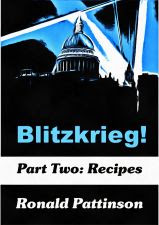That wasn’t Heineken’s complete range of beers. It looks as if there were some beers which were only produced in Amsterdam: Gerste, Münchener and Export.
| Heineken wholesale prices 1904 - 1914 | |
| beer type | cents per litre |
| Gerstebier | 8 |
| Lager | 8 |
| Rotterdamsche Gerste | 11 |
| Münchener | 14 |
| Export | 14 |
| Beiersch (donker) | 13 |
| Pilsner (licht) | 13 |
| Bock | 15 |
| Source: | |
| 1904-1914 - "Korte Geschiedenis der Heineken's Bierbouwerij Maatschappij N.V. 1873 - 1948" (p.218) | |
My guess would be that the Gerste was a lower gravity version of the Gerste brewed in Rotterdam, that is a dark, bottom-fermenting beer which wasn’t lagered. Export must be a type of Dortmunder, with a gravity of around 14º Plato. Münchener I suppose was a stronger version of Beiersch, again with a gravity of around 14º Plato.
Comparative prices in 1911
In this 1911 pricelist, you can see the relative prices of different types of Lager:
| Price relative to ABV | ||||
| Beer | ABV | price per bottle | cents per 1% ABV | % cheaper than Pils |
| Gerste | 3.7 | 11 | 2.97 | 26.14% |
| Lager | 3.4 | 9 | 2.65 | 41.67% |
| Pils | 4.8 | 18 | 3.75 | |
| Source: | ||||
| Advert in Rotterdamsch Nieuwsblad, 16th September 1911, page 4. | ||||
Pilsener was, relative to its alcoholic strength, the worst value for money, as this table demonstrates:
Pils was 26% more expensive per unit of alcohol.












































































No comments:
Post a Comment